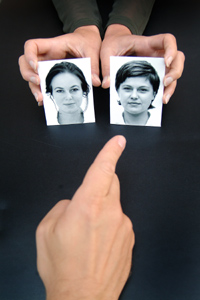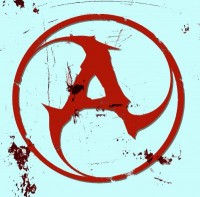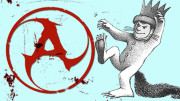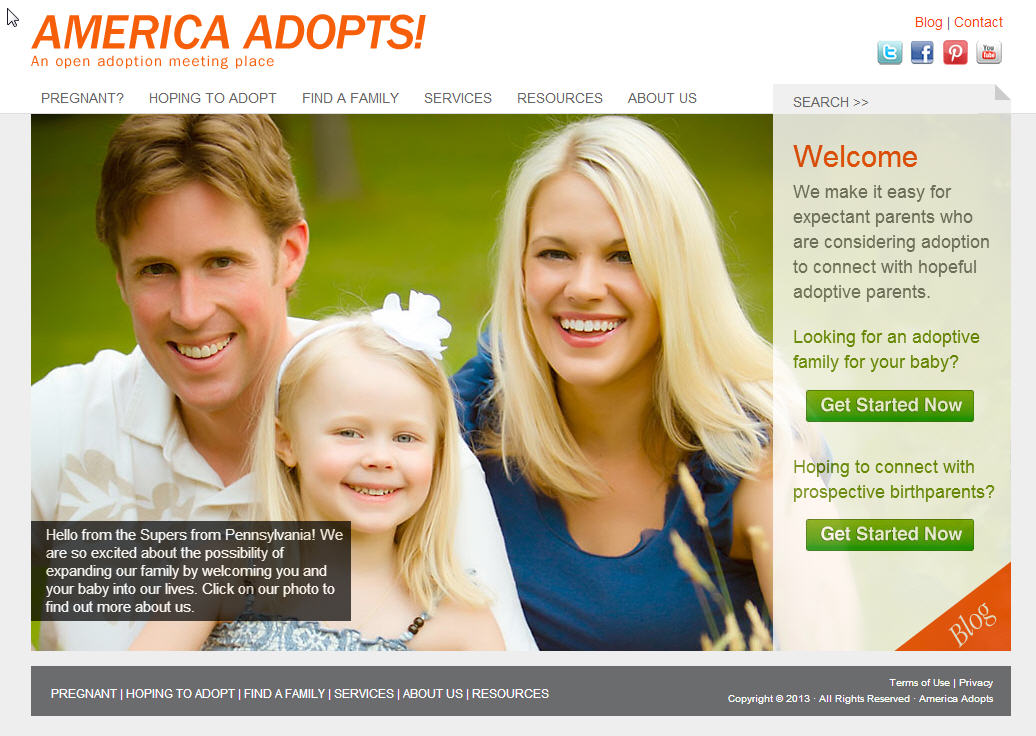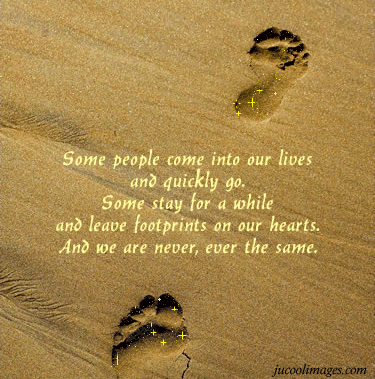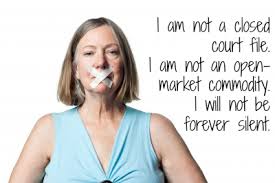The Association for Research on Mothering
York University Karen Lynn
2001
Good afternoon. This speech is a message from the mothers of the Canadian Council of Birthmothers, mothers who have suffered the trauma of having lost a child or children to adoption and who are learning to understand what happened to us and our children. Much of what I say here is a collection of thoughts shared by the members of the CCBM. We are mostly first mothers and some adopted persons who acknowledge the life-long suffering caused by adoption and seek the truth. What follows is a work in process on this journey which is just beginning. I will also acknowledge with deepest love and gratitude the contribution of my son Doug with whom I have been reunited now for 26 months and 7 days. Together we have spent hundreds of hours processing our loss and the circumstances of our reunion. The day we met in person we sat down together in my kitchen, he enfolded my hands in his and asked, “What happened?”
What follows is in part an answer to this question.
The Historical Victimization of Mothers
In the 19th century, race science, the belief that there are distinct human races that can be identified, and classified scientifically by judgements of intelligence, emotional and moral capabilities, included blacks, poor people, criminals and white women. Scientists poured beans into the skulls of deceased members of such groups and then compared the sums found in each type of skull to numbers of beans captured in more respectable skulls, white men of substance.
In a remarkable travesty of science, they determined that women had intelligence which was less evolved than that of men and in particular, poor women. Poor women, because of “poor moral fibre” and lesser intelligence, produced children out of wedlock and hence became a “problem”. Thus, because of prevailing social prejudice and bad science, we were reduced by circumstances to a class of social inferiors, fallen women. The theory of “bad blood”, associated with race science, assumed the heritability of moral inferiority. It was assumed that “illegitimate” children would inevitably inherit inferior characteristics and swell the ranks of the poor and criminal. The powerful of the time determined that not only did the mothers have no right to keep their children, but that the children would be better off without their mothers.
Later, the theory of the “tabula rasa”, assumed that a baby was a blank slate containing no predetermined behavioural constructions. This was an ideal platform on which to justify adoption practices and the removal of children from their natural parents. The child could be molded by an adoptive family with no fear of interference from the “inferior characteristics of the first mother. Eventually science wove its way into the laws of Canada on March 29, 1927 after the urging of adoptive parents who lobbied the government of Ontario because they were distressed by the existence of their adopted children’s original identities on their birth certificates. The Adoption Act in Ontario was amended and a clause added which sealed the adoption. Neither the Toronto Star nor the Globe & Mail published any articles about this historic moment for adoptees and their natural parents.
The Problem of the Mothers Now
The maternal instinct is strong. How do you pry a baby away from her mother? As you shall see, the secrecy provided for in the laws of early twentieth century provided an ideal environment in which to make this happen.
Separating mothers from their children, en masse, could only happen in a climate of coercion. The creation of an entire subclass of people, fallen women, made coercion possible. The fallen woman became situated in her place of no power during the twentieth century. First, the prevailing social opinion held that natural mothers of “illegitimate” children were inferior, as I have said, and therefore incapable of raising their children. This, in combination with shame paralyzed the mother. The application of shame, coupled with poverty and the unacknowledged trauma of the mother, enabled the circumstances leading up to the surrendering of her child. The laws of Canada, one by one across the country, dignified this process by claiming to act “in the best interests of the child” and for the good of the mother, since secret adoption records also saved her from the shame. This was all done across this land without consulting natural mothers or their “illegitimate” offspring as to their opinions and the consequences of adoption, secret or otherwise. It was done to them, for them, but not by them.
The face of shame and coercion changed over the years and often involved force which rarely went detected. The language of adoption has always marginalized us with legal adjectives to keep us separate, different than and less than full mothers of our children. The “fallen woman” became the “unwed mother” who became the “birthmother”. We became legal non-entities upon signing the government forms called “consent to adoption”. We were no longer parents. Institutional and governmental practices leading up to and subsequent to our signing the papers ensured our acquiescence. For the most part, it worked.
The Adoption Industry
The adoption industry was created to support the systematic transfer of babies from their original parents to their new homes with adoptive parents. The industry engaged the social work profession, lawyers, doctors, government workers, churches, the police etc., all of whom formed a powerful web to secure their own interests which involved the transfer of large sums of money to fill the pockets of these workers. How large this was and is in Canada, I don’t know. But I can give you an idea extrapolated from the American experience.
Found currently on the adoption site adoption.about.com:
Adoption Services Valued At $1.4 Billion
An industry analysis of Fertility Clinics and Adoption Services by Marketdata Enterprises
of Tampa, FL, has placed a $1.4 billion value on adoption services in the US, with a
projected annual growth rate of 11.5% to 2004. According to a report from
PR Newswire, this is the only analysis of this business sector ever undertaken.
Marketdata’s analysis places adoption costs between $15,000 – $30,000, and describes adoption as “complex, and stories of unscrupulous operators abound in this loosely regulated field.” If you could extrapolate this $1.4 billion dollars on a per capita basis to Canada, you would project a sum of $156M involving the adoption industry in Canada. This I admit is a crude projection and will no doubt vary because of Canadian circumstances. But even if it’s off by 25% or more, one can see the scope of investment in adoption in Canada.
In her speech to The First National American Adoption Congress, Washington D.C. on May 4, 1979, Margaret McDonald Lawrence encapsulated the need of the adoption industry to manufacture the demonization of the natural mother as the most pivotal and necessary requirement in the promotion of, and social acceptance of adoption, when she stated:
“In order to bring the issues surrounding the intermediary system into clear focus, it is necessary to examine the myths and motives that surround the adoption experience. Outsiders need to realize that social agencies not only control adoption procedures, but also control the information about the institution which is provided to the courts, the legislature and the public. It is the child welfare establishment that has provided the picture of birth mothers as indifferent – as mothers who abandon their unwanted children with a wish to remain forever hidden from them. They know that this is seldom
true, but it helps to facilitate their work for the public to believe this. Society does not dismiss the importance of the natural family as readily as the social planners, and so it is useful to portray relinquishing parents as different from caring parents.The birth mother must be different, an aberration; for if it were true that she had the same degree of love for her child as all other mothers, the good of adoption would be overwhelmed by the tragedy of it.”
The following is from Fallen Women Problem Girls: Unmarried Mothers and the Professionalization of Social Work, 1890 – 1945 by Regina G. Kunzel (1993). It is the basis of how we were seen and how we were treated in the 1960’s and early 70’s:
“…social workers placed unmarried mothers at the vortex of a constellation of larger social problems that revolved around the state of morality and family life. By various interpretations, the unmarried mother functioned as cause and effect of those problems; that she was embroiled in this maelstrom, however, was uncontested. To Judge Benjamin Lindsey, for instance, unmarried mothers, ‘are in society a part of its problem and its filth. They are responsible for many of the divorce cases, for its broken homes, desertions, sorrow, misery, blighted faith, despair, and the great mass of social ills which infect society.’ In Lindsey’s view, shared by many of his contemporaries, unmarried mothers were not victims but rather agents of larger social problems. Taking up the issue of out-of-wedlock pregnancy, social workers began to see unmarried mothers not as endangered but as dangerous.”(p.51).
“The task of inventing their own modern, professional identities led social workers to contribute to new sexual discourses that stigmatized working-class women’s sexuality as pathological and criminal.” (p.64).
In the 1940’s to the 1960’s we are labeled neurotics. Anne Petrie in “Gone to an Aunt’s”, 1998, reports that at a conference of psychologists in 1964 named bizarrely the Out of Wedlock conference, we were described as having a deficient ego or an unresolved electra complex as well as being “psychically weak.”. Social workers argued that sex delinquents were unfit to be mothers, and neurotic unmarried mothers were considered no more competent to care for their children. In the 1940’s, social workers took a more active role in encouraging unmarried mothers to put their children up for adoption”. (Regina Kunzel, 1993 P.155)
“In my experience,” wrote Leontine Young, a prominent psychologist who wrote Out of Wedlock in 1954, asserted, “the majority of unmarried mothers are not strong, mature, well adjusted people, and the reality is that only such a person can assume and carry out responsibility for an out-of-wedlock child without serious damage to both herself and the child.”
The Medical Profession – doctors and nurses In her book about the moral regulation of single mothers 1920 -1997, No Car, No Radio, No Liquor Permit, Margaret Jane Hillyard Little, 1998.
In the late 50’s: “The debate inside Queen’s Park was only part of a larger controversy that continued concerning morality and premarital sex. Unwed mothers became the scapegoats for much of this societal turmoil about moral standards. Dr. Marion Hilliard, Chief of Obstetrics and Gynecology at the Women’s College Hospital in Toronto believed that an unwed mother should be punished by having her child adopted:
‘When she renounces her child for its own good, the unwed mother has learned a lot. She has learned to pay the price of her misdemeanor and this alone, if punishment is needed, is punishment enough.’
Other social workers and officials representing homes for unwed mothers echoed Dr. Hilliard’s philosophy” (1998, p.135).
It never seems to have occurred to any of these professionals that we were normal people who were caught in a web of social taboos with no way out. Our problems were political; we just needed support, not analysis. Families There is an old Scottish saying, “Take care of your own.” How could this basic strategy to survive have been forgotten by families? How can shame be this powerful? Families more often than not colluded with the institutions. They accepted the social construction of the great shame and expelled their daughters, sending them to maternity homes, which themselves played out the secrecy in rigorous and punitive ways, or they sent their daughters to live with other strangers or relatives. Daughters were separated from all of their support systems – friends, relatives and fathers of their babies even if they wanted to be supportive. The church and state were supreme. In these ways families reinforced our own sense of unworthiness as mothers to our own flesh and blood.
Losing a child to adoption is a trauma unlike any other. It is a sentence of endless unresolvable loss and grief for most. The consequences of this loss play themselves out it ways too vast to adequately explain here.
- For the mother, she may become infertile herself. Some 30-50% do.
- She may find herself practising destructive behaviours which ensure that she never has to trust anyone again, or she may become ill and/or suicidal.
- If she has more children in a “legitimate” family, they too may suffer from her unresolved sorrow.
Here are some examples of the experiences of our own members:
One mother in Montreal in 1959 was forced to sign “the paper” on Christmas eve less than two and a half hours after giving birth so that the staff could go home early. Later, when she got her non-identification papers, they stated that the form was signed three weeks later than it actually was. Where was legal counsel to advise her of her rights?
In 1978 Cathy Henderson was thrown out of her home onto the front lawn on the advice of the family priest. She was 17 and seven months pregnant. She wanted to marry her baby’s father but was prevented. She wandered around the city until she found a maternity home. Cathy has the scars to prove that she was abused by a hospital nurse yielding a razor blade when she gave birth, and when she finds her son she expects to see scars on the crown of his head. She never signed “the papers” but had her baby removed from her by court order.
Another mother was raped on her eighteenth birthday. The rapist was never punished but she was also ostracized by her family.
Many of us were injected against our will with the lactation-suppressing drug DES which caused cancer or we were subdued in hospital with other drugs.
We were often treated badly by hospital staff who refused to let us see or hold our babies even prior to our signing the papers when we were still the legal guardians of our babies. In the Toronto General Hospital in 1963 I was refused access to my son yet had to endure the indignity of reading a note attached to his basinette which read: “Mother does not want to see baby”. The coercion of the mother, shamed and blamed, made her feel inadequate to parent her
child.
She wanted a good home for her baby. This meant having a father, which she couldn’t provide. But without the support of family, friends and the child welfare institutions, where was the choice?
Today
Now what about “the best interests of the child”?
Sandra Jarvie, a CCBM member wrote in a private e-mail:
“‘Best interests of the child’ is really a brainwashing technique that has survived through the decades … It forms the picture of the ‘child at risk’ with his/her natural mother therefore demeaning and devaluing the mother not only to society but also to us… Today it’s used like a weapon. Imagine in an open adoption the young woman will never be ‘good enough’. If she is poor and the adoptive family is wealthy she will be continuously reminded of her lesser value, because in the ‘best interests of the child’ parents with money are better. So ‘the best interests of the child’ … supports adoption ‘choice’ into the future. In the past it was our morals and poverty, today it’s poverty… It was for me in 1968, times haven’t changed.”
The feminist establishment ignores us. Why is there virtually nothing about us in feminist literature? Could it be that they too are conflicted about us? Have the imperatives of “pro choice” eclipsed our true history? Today young unsupported pregnant women are lured into plans to surrender their children, sometimes in so-called “open adoptions” where the mothers have no legal rights to see their children. The grief and loss is the same for such mothers.
Sanctioned by our governments, the internet abounds with pictures advertising children for adoption without any regard for their future. Some of them will come to feel as commodified as cattle or slaves in the past.
We do not accept the definitions which ripped our children from our breasts and damaged ourselves and our children under the hypocritical guise of “the best interests of the child”. We claim our place as mothers of our children who were taken from us by deceitful acts of coercion.
